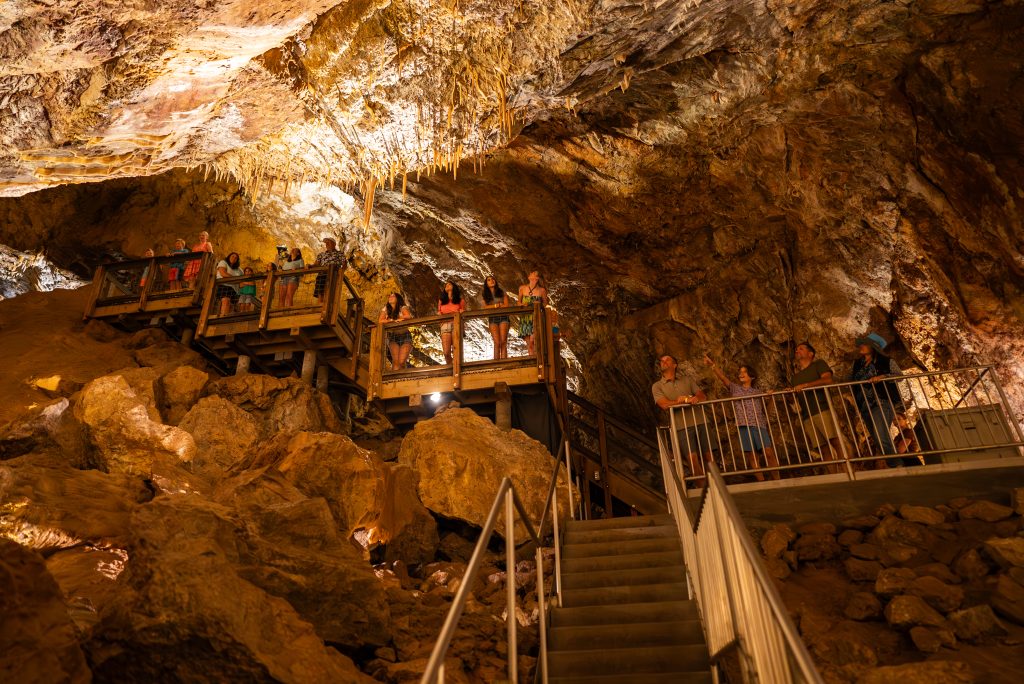On Dec. 13, 2023, U.S. Interior Secretary Deb Haaland announced two new National Natural Landmark designations, including Glenwood Caverns and Iron Mountain Hot Springs.
The Glenwood Springs Post Independent broke the story, following up on a media release from the U.S. Department of Interior. The other designation was for John Thacher State Park in New York for its unique geologic features.
Iron Mountain’s unique cavern formations and its underground ecosystems, which foster habitat for an array of microbes, bats and other creatures, was a key reason for the designation, according to the federal agency.
Stewardship of the caverns by Steve and Jeanne Beckley, owners of Glenwood Caverns and Iron Mountain Hot Springs, has maintained a living cave environment where visitors can experience its underground wonders.
An article about the two new landmark designations notes, “Below the surface of Iron Mountain are beautifully decorated caves formed by unique processes that host rare and diverse ecosystems, and whose features constitute a geomorphic timeline that is revealed by the downcutting of the Colorado River, telling a story millions of years in the making.”
The Beckleys applied for the National Natural Landmark more than 10 years ago, and have been waiting since then for the designation to be approved.
“It just took a lot of years for the experts to go through all the processes and to get it passed,” Steve Beckley told the Post Independent.
Beckley also expressed his hope that the landmark designation will help protect the nearby slope where Rocky Mountain Industrials proposes a huge expansion of its limestone mine.
He said the mine expansion threatens other cave formations and the underground aquifer that feeds Iron Mountain Hot Springs and the community’s other hot springs.
Damage to the area’s underground cave network is also a concern for the Glenwood Springs Citizens’ Alliance.
“We know cave formations exist within the proposed mine expansion area. The unexplored Witches’ Pantry Cave, discovered in 2019, is a key example,” said Heather McGregor, vice president of the Citizens’ Alliance.
“Mining those limestone layers would destroy those caves, and could disrupt the complex underground network that recharges the hot springs aquifer,” she said.
“If the underground groundwater network is damaged, Glenwood Springs could lose an irreplaceable natural resource that is also the economic driver of our community.”
Hanging Lake is the only other location in Garfield County to be designated a National Natural Landmark. Its beauty is also dependent on limestone formations that create the travertine ledges forming the lake and its waterfalls.

Visitors to the Glenwood Caverns descend hundreds of stairs to view the many formations inside Iron Mountain.

Stalactites are among the many formations that are protected within the “living cave” environment of Glenwood Caverns.

These underground formations are close to the surface in Witches’ Pantry Cave. Discovered in 2019 in the area threatened by the limestone mine expansion, Witches’ Pantry remains unexplored.

Travertine deposits over many thousands of years have formed Hanging Lake. Accessible by a two-mile hike from the Hanging Lake Rest Area in Glenwood Canyon, it is the only other National Natural Landmark in Garfield County, Colorado.
Photo by Andrea Holland.
More information about National Natural Landmarks
Read the U.S. Department of Interior media release
Learn more about the National Natural Landmarks program, administered by the National Park Service